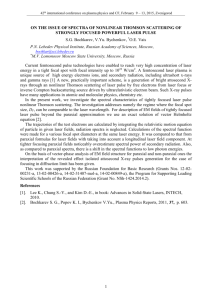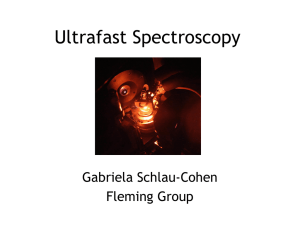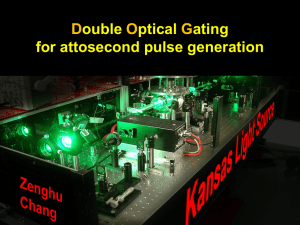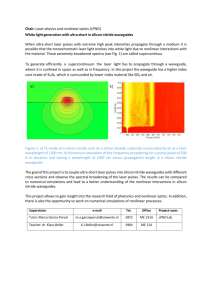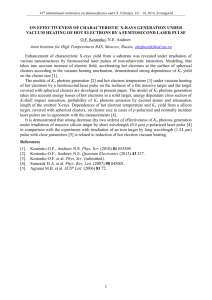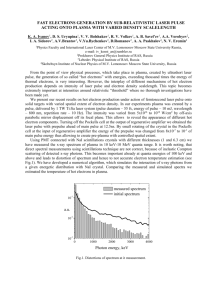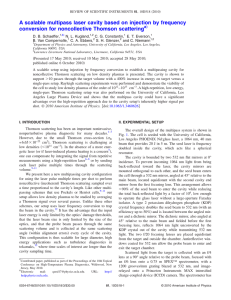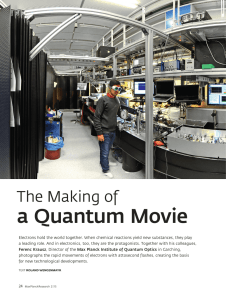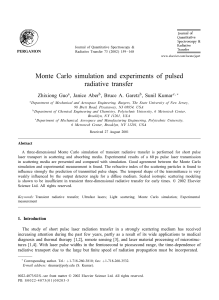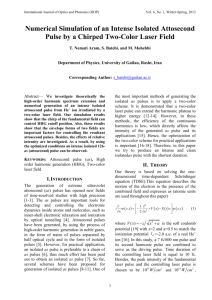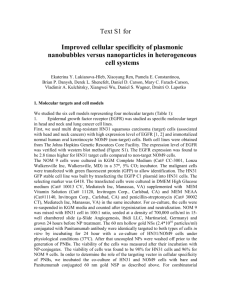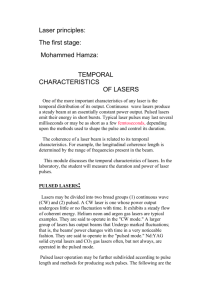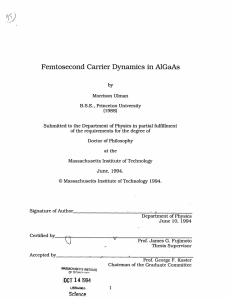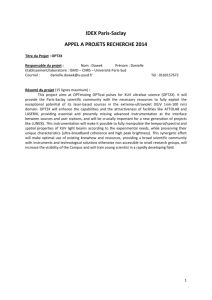NONLINEAR THOMSON SCATTERING oF ELECTRONS WITH A
advertisement
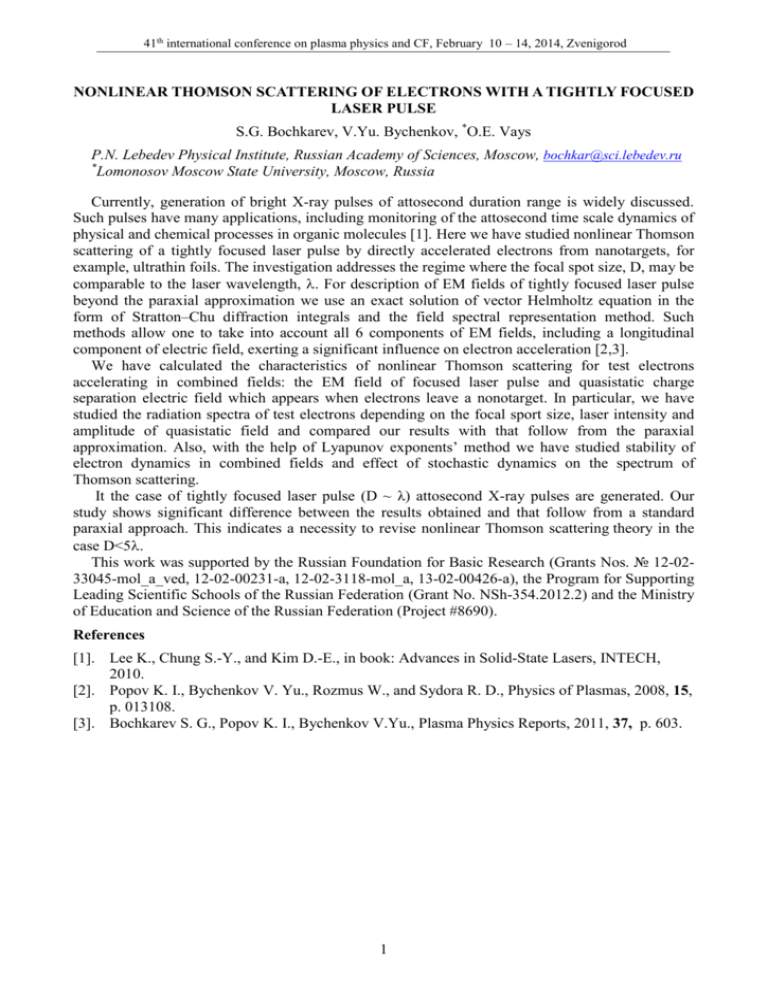
41th international conference on plasma physics and CF, February 10 – 14, 2014, Zvenigorod NONLINEAR THOMSON SCATTERING OF ELECTRONS WITH A TIGHTLY FOCUSED LASER PULSE S.G. Bochkarev, V.Yu. Bychenkov, *O.E. Vays P.N. Lebedev Physical Institute, Russian Academy of Sciences, Moscow, bochkar@sci.lebedev.ru * Lomonosov Moscow State University, Moscow, Russia Currently, generation of bright X-ray pulses of attosecond duration range is widely discussed. Such pulses have many applications, including monitoring of the attosecond time scale dynamics of physical and chemical processes in organic molecules [1]. Here we have studied nonlinear Thomson scattering of a tightly focused laser pulse by directly accelerated electrons from nanotargets, for example, ultrathin foils. The investigation addresses the regime where the focal spot size, D, may be comparable to the laser wavelength, . For description of EM fields of tightly focused laser pulse beyond the paraxial approximation we use an exact solution of vector Helmholtz equation in the form of Stratton–Chu diffraction integrals and the field spectral representation method. Such methods allow one to take into account all 6 components of EM fields, including a longitudinal component of electric field, exerting a significant influence on electron acceleration [2,3]. We have calculated the characteristics of nonlinear Thomson scattering for test electrons accelerating in combined fields: the EM field of focused laser pulse and quasistatic charge separation electric field which appears when electrons leave a nonotarget. In particular, we have studied the radiation spectra of test electrons depending on the focal sport size, laser intensity and amplitude of quasistatic field and compared our results with that follow from the paraxial approximation. Also, with the help of Lyapunov exponents’ method we have studied stability of electron dynamics in combined fields and effect of stochastic dynamics on the spectrum of Thomson scattering. It the case of tightly focused laser pulse (D ~ λ) attosecond X-ray pulses are generated. Our study shows significant difference between the results obtained and that follow from a standard paraxial approach. This indicates a necessity to revise nonlinear Thomson scattering theory in the case D<5. This work was supported by the Russian Foundation for Basic Research (Grants Nos. № 12-0233045-mol_a_ved, 12-02-00231-a, 12-02-3118-mol_a, 13-02-00426-a), the Program for Supporting Leading Scientific Schools of the Russian Federation (Grant No. NSh-354.2012.2) and the Ministry of Education and Science of the Russian Federation (Project #8690). References [1]. Lee K., Chung S.-Y., and Kim D.-E., in book: Advances in Solid-State Lasers, INTECH, 2010. [2]. Popov K. I., Bychenkov V. Yu., Rozmus W., and Sydora R. D., Physics of Plasmas, 2008, 15, p. 013108. [3]. Bochkarev S. G., Popov K. I., Bychenkov V.Yu., Plasma Physics Reports, 2011, 37, p. 603. 1

